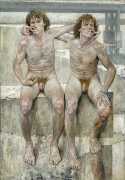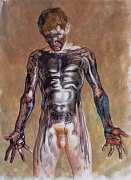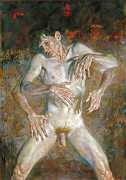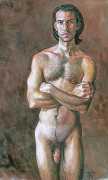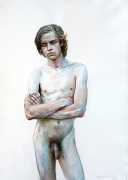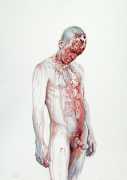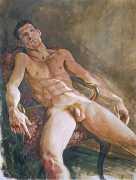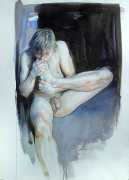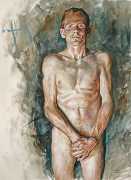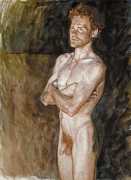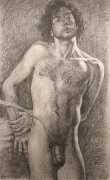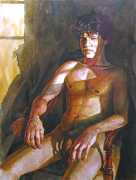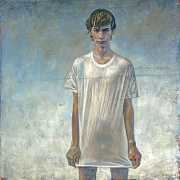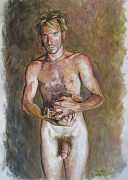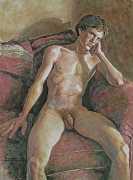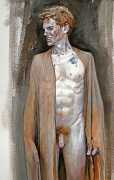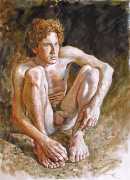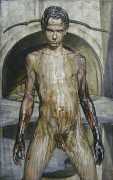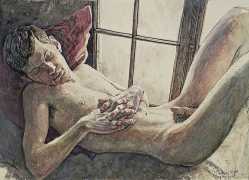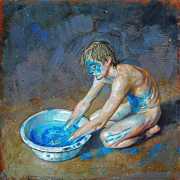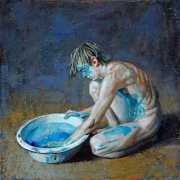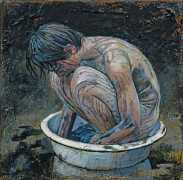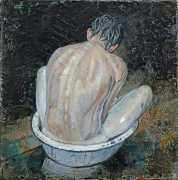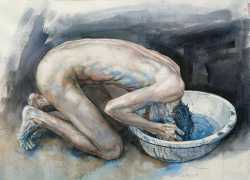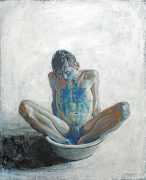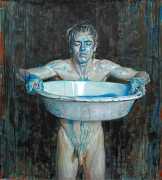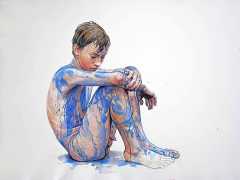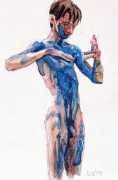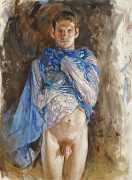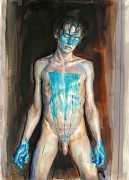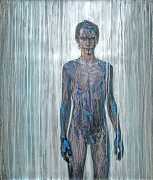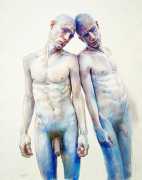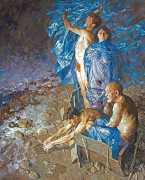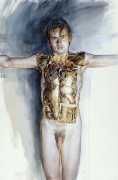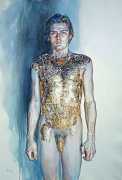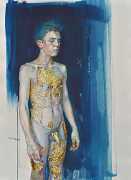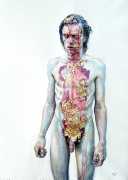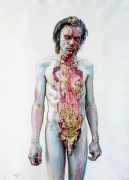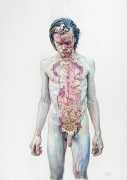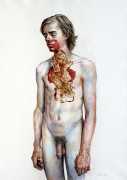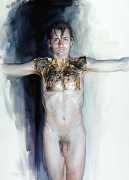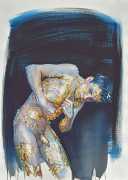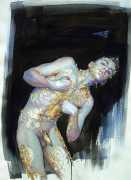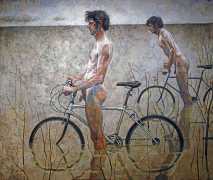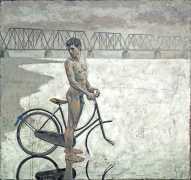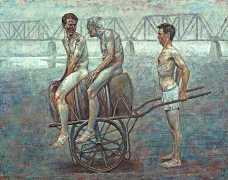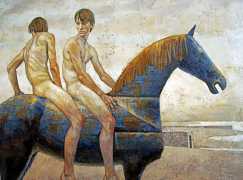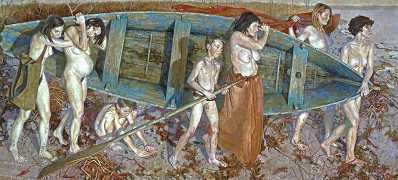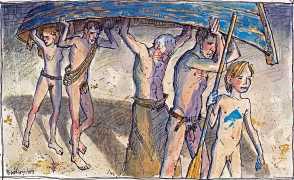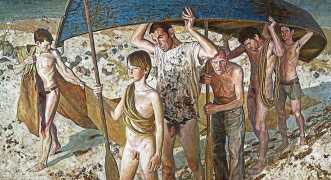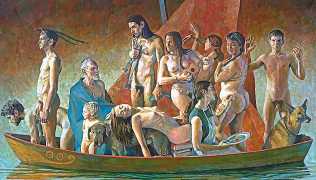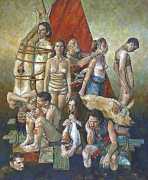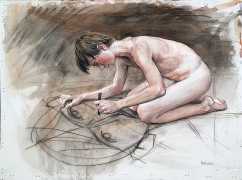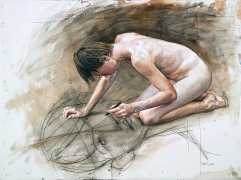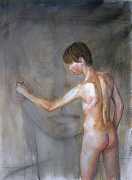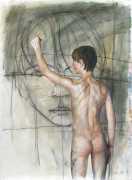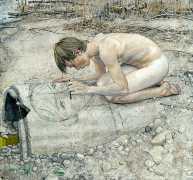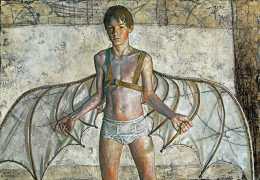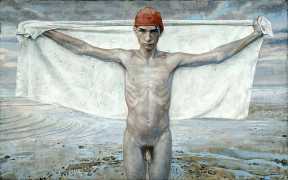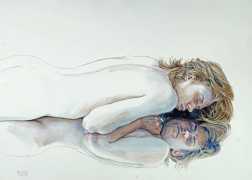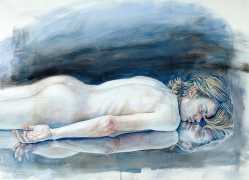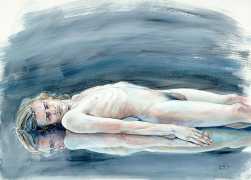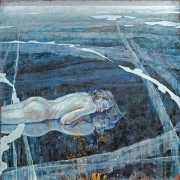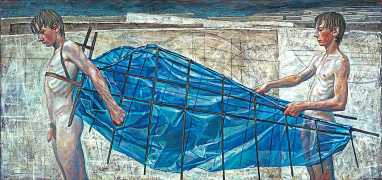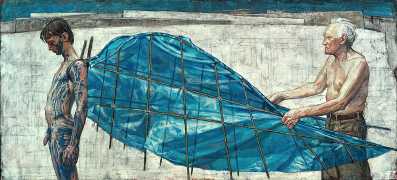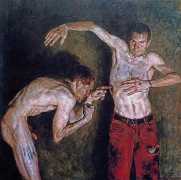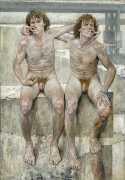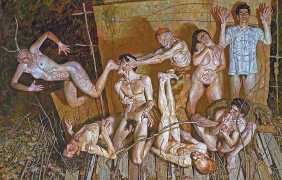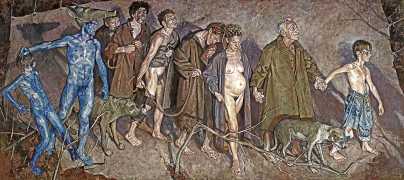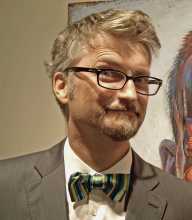 The Canadian artist Daniel Barkley grew up in Montréal, and after leaving school studied at Concordia University, where he graduated as Bachelor of Fine Arts in 1990 and gained his Masters in 1994, specialising in film production. His first solo exhibition was at the Justina M. Barnicke Gallery in Toronto in 1994, and since then he has exhibited regularly, mostly in Montréal and Toronto. His paintings have won top prizes at national competitions, including the Canadian Society of Painters Watercolour’s A.J. Casson Medal in 2002 and 2012.
The Canadian artist Daniel Barkley grew up in Montréal, and after leaving school studied at Concordia University, where he graduated as Bachelor of Fine Arts in 1990 and gained his Masters in 1994, specialising in film production. His first solo exhibition was at the Justina M. Barnicke Gallery in Toronto in 1994, and since then he has exhibited regularly, mostly in Montréal and Toronto. His paintings have won top prizes at national competitions, including the Canadian Society of Painters Watercolour’s A.J. Casson Medal in 2002 and 2012.
The human figure features prominently in Barkley’s works and, although they may be viewed as portraits, Barkley’s paintings also allude to myths, legends, and the history of art. The tension between the intimate portrait and the theatrical presentation of stories that present truths about the human condition is a principal characteristic of his work. His figures offer the viewer a singular glimpse into a universe in which real people and fictional characters co-exist.
As he explains, ‘I create my paintings as narratives. Sometimes the narrative is clear, the action direct, an interpretation can be made easily. In other paintings the story and its meaning is not always discernible and the interpretation is left open. I see the people in my paintings as characters within these narratives. A character that begins his story in one painting may find a denouement in a later piece. As a result of my attempts to streamline the narrative, to rid the painting of extraneous elements, the actors often appear naked. Clothes denote social class, profession, period, gender, age. By eliminating them, paring down the mise-en-scene, the interpretation of the narrative is broadened to hopefully include the viewer’s own speculations.’
Daniel Barkley offers a clear link with the great masters of the nineteenth century through his mythological and biblical themes, his composition and technique, all the while remaining firmly contemporary and personal. Some of his paintings speak to the works of older masters, with a personal nod to Carravaggio, Bosch and Bruegel. In all his canvases, Barkley demonstrates a mastery of technique, a keen sense of balance in his composition, a strong artistic vision, and a profound love of painting.
As is clear from his subject matter, Daniel Barkley is openly gay. In a far-ranging 2016 interview with Body magazine, which you can read here, Barkley directly addressed his sexuality, stating, ‘As a gay man — ’ when discussing how his identity intersects with his exploration of Christian mythology and art. His work often delves into themes of homoeroticism, vulnerability and transformation, drawing upon Christian and mythological narratives. For example his depictions of Saint Sebastian, a figure historically associated with gay iconography, are reinterpreted through a personal and contemporary lens. Barkley has described Saint Sebastian as symbolic of the young gay man, diseased and dying from the poison arrows that pierce his skin. More recently, he has rendered the saint with the arrows removed, to signify survival.
Daniel Barkley’s website is here, and his Instagram account here. He is represented by Galerie Mark Liebner in Montréal, the Christine Klassen Gallery in Calgary, and Galerie MooiMan in Groningen in The Netherlands.
We are very grateful to our Russian friend Yuri for introducing us to the work of this artist, and for supplying many of the images.

